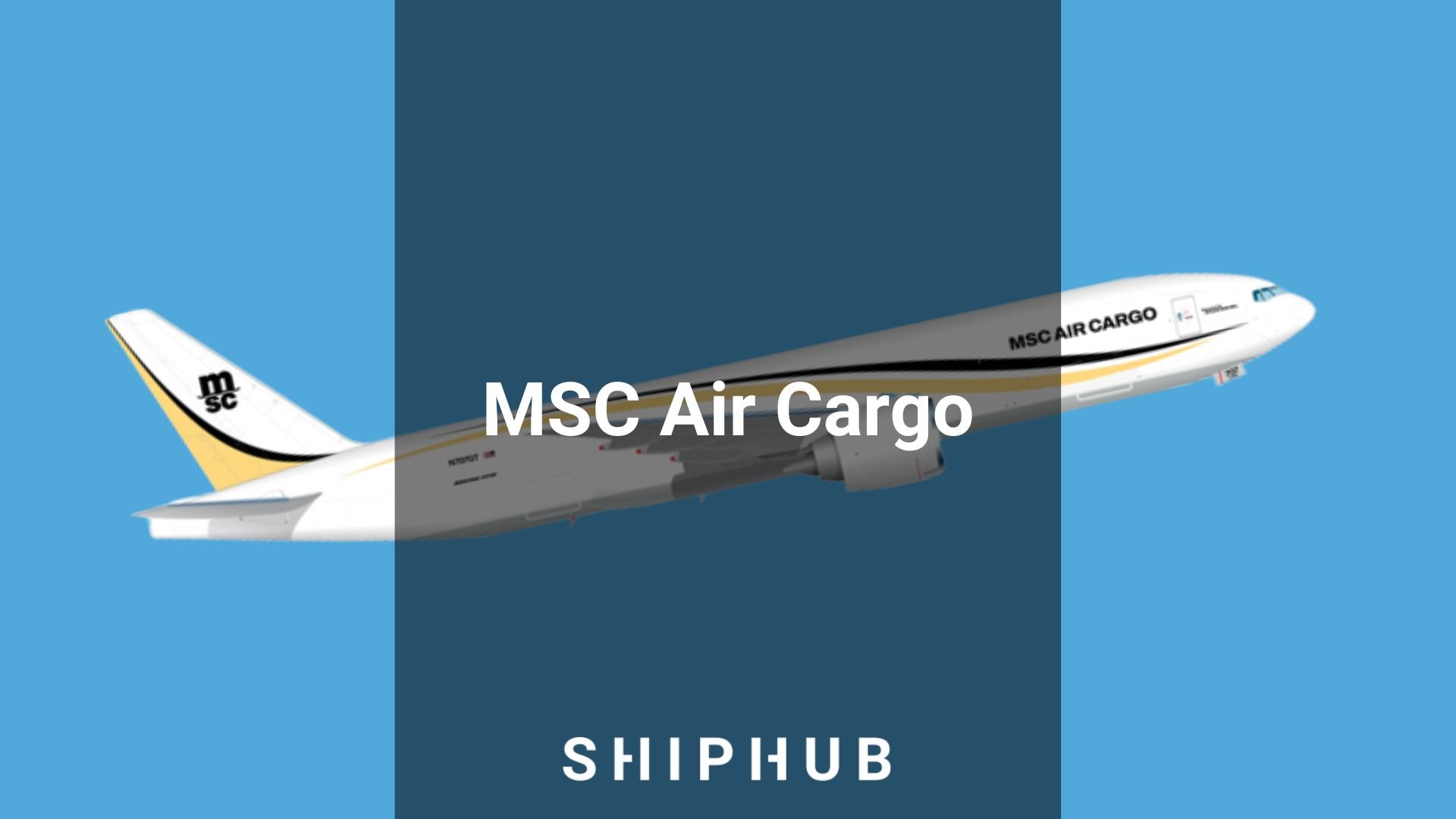When transporting cargo by sea, it is essential to pick the right type and size of a container. It is important to do so, so the cargo will not be damaged during shipping. It is also easier to load and unload the cargo. What kinds of containers and sizes are there?
Cargo containers types and sizes – what types are there?
A shipping container is usually a rectangular box that can be closed with double-winged heavy doors. Containers are mostly used in intermodal transport, mainly to carry general cargo by rail and sea. They are also often used for storage. They enable shipping cargo in large amounts, so they play an essential role in foreign trade.
The specific types of containers differ by size, capacity, and even light exposure. They also have their kind of curb weight, called the tare weight. It also consists of ferrules and various devices, as they are usually an integral part of the container. Because of that, each container has its designated purpose.
General cargo containers – for general use
General containers are used for transporting all kinds of cargo. They are often used to ship heavy cargo. You can modify general containers and ship either dry bulk or liquid cargo. This type of container’s tare weight usually is from 1.8t to 2.5t, and its average capacity is 21.8t.
There are three types of general cargo containers:
- 20’ Standard/DV
- 40’ Standard/DV
- 40’ High Cube (HC)
| General container | Capacity (m3) | Weight (kg) | Door width (mm) | Door height (mm) | Outer length (mm) | Internal length (mm) | Internal height (mm) |
| Container 20’ Standard | 32.3 | 21.687 | 2.305 | 2.276 | 5.918 | 2.330 | 2.356 |
| Container 40’ Standard | 66.9 | 26.380 | 2.330 | 2.278 | 12.015 | 2.330 | 2.389 |
| Container 40’ High Cube | 76.6 | 26.040 | 2.339 | 2.591 | 12.033 | 2.350 | 2.700 |
Open-top/hard-top containers
Open-top/hard-top containers are usually used for shipping cargo that has excess height. Such containers are often loaded using a crane and are also commonly chosen when shipping products that do not fit through a regular container’s doors. It has become common to use open-top/hard-top containers to ship bulk solids.
The hard-top container has a steel roof, and its door opening has a dismantlable top beam. During transport, the roof is covered with a waterproof tarp locked with a container seal.
Open top and hard top containers are considered specialized equipment, so the rental price is higher than general containers.
| Type | Capacity (m3) | Weight (kg) | Door width (mm) | Door height (mm) | Outer length (mm) | Internal length (mm) | Internal height (mm) |
| Container 20’ Open Top | 32.3 | 18.140 | 2.318 | 2.273 | 5.885 | 2.319 | 2.366 |
| Container 40’ Open Top | 66.7 | 26.530 | 2.335 | 2.287 | 12.017 | 2.333 | 2.318 |
Cargo containers – open-sided containers
Open-sided containers are equipped with large, double-wing doors on the larger side of the container. Therefore it is easier to load and unload cargo, making the container’s interior fully accessible. In some cases, doors are also placed on one of the shorter sides.
Other than faster loading and unloading, this type of container enables to sort cargo without unloading it. Open-sided containers are great for cargo that does not fit into other containers.
There are two types of open-sided containers:
- 20’ with open sides
- 40’ with open sides
| Open-sided container | Weight (t) | External dimensions (m) | Internal dimensions (m) | Door dimensions (m) | Opened sides dimensions (m) |
| Container 20’ | tare weight: 3,170 cargo weight: 20,83 | length: 6,058 width: 2,438 height: 2,591 | length: 5,898 width: 2,287 height: 2,302 | length: 2,226 height: 2,189 | length: 5,846 height: 2,189 |
| Container 40’ | tare weight: 3,880 cargo weight: 26,60 | length: 12,192 width: 2,438 height: 2,896 | length: 12,032 width: 2,350 height: 2,695 | length: 2,338 height: 2,585 |
Flat rack containers
Flat rack containers allow for shipping cargo that would be too large to fit into general or open-top containers. Cargo can be secured to flooring or frames. The relatively thick flooring and built-in longitudinal beams are also equipped with numerous mounting brackets.
| Type | Capacity (m3) | Weight (kg) | Internal length (mm) | Internal width (mm) | Internal height (mm) |
| Container 20’ Flat Rack | 32.5 | 21.100 | 5.900 | 2.397 | 2.303 |
| Container 40’ Flat Rack | 65 | 26.280 | 12.035 | 2.335 | 2.315 |
Platform containers
A platform container is meant to transport heavy and OOG cargo, as it has a larger capacity than other containers. Both the flooring and the longitudinal beams are equipped with high resistance mounting brackets to make transport safer. The floor is very solid so that it could withstand the pressure of heavy cargo.
| Platform container | Weight (kg) | Internal dimensions (m) |
| Container 20’ | tare weight: 2,740 cargo weight: 31,260 | length: 6,06 width: 2,44 |
| Container 40’ | tare weight: 5,700 cargo weight: 39,300 | length: 12,19 width: 2,44 |
Tank containers
Tank containers are used to transport liquid chemicals and beverages. They’re made of a tank placed inside a special 20’ general container. Such containers have to be built following IMDG (International Maritime Dangerous Goods) requirements.
Tank containers are usually at least 80% filled to avoid rapid undulation of the cargo during transport. Food products are shipped in containers marked “Potable Liquids only.” Some shipments need to fulfill dangerous goods sea freight requirements. These types of products are divided into “IMO” classes.
- IMO 0 – for transporting non-dangerous food products that do not need to be unloaded under pressure, such as milk, mineral water, vegetable oils, and unconcentrated juices.
- IMO 1 – for transporting chemicals (has an upper drain depending on the type of product)
- IMO 2 – for transporting unsafe food products and chemical products allowed for shipping (can have an electric heating system)
| Class | Dimensions (m) | Capacity (l) | Tare weight (kg) | Container wall size (mm) | Thermal isolation (Kcal/m2X C) | Steam heating (M2) | Operating pressure (bar) |
| IMO 0 | length: 2,438 width: 6,096 height: 2,591 | min.: 17000 max.: 26000 | min.: 2200 max.: 3000 | min.: 2 max.: 3 safety measure: valve | min.: 0,7 max.: 0,17 | min.: 1,5 max.: 5 | min.: 1,75 max.: 2,5 |
| IMO 1 | length: 2,438 width: 6,096 height: 2,591 | min.: 11000 max.: 26000 | min.: 3500 max.: 6000 | min.: 5,2 max.: 8 safety measure: valve + serial disk cut off | min.: 0,7 max.: 0,28 | min.: 2,5 max.: 10 | min.: 4 max.: 6 |
| IMO 2 | length: 2,438 width: 6,096 height: 2,591 | min.: 17000 max.: 26000 | min.: 2500 max.: 4000 | min.: 3 max.: 4 safety measure: valve | min.: 0,7 max.: 0,17 | min.: 2,5 max.: 5 | min.: 3 max.: 6 |
Refrigerated containers
Refrigerated containers are used for transporting products that need a steady temperature. It is possible due to walls filled with polyurethane foam and flooring made of aluminum T-gratings. The containers keep a temperature of 25 to -25 degrees Celsius as long as the outside temperature does not reach 42 degrees (for heating) and 65 (for cooling).
| Type | Capacity (m3) | Weight (kg) | Door width (mm) | Door height (mm) | Outer length (mm) | Internal length (mm) | Internal height (mm) |
| Container 20’ insulated refeer | 26.6 | 18.152 | 2.235 | 2.070 | 5.677 | 2.236 | 2.077 |
| Container 20’ non-insulated refeer | 28 | 20.440 | 2.270 | 2.222 | 5.480 | 2.248 | 2.247 |
Containers and sizes – what should you remember when shipping cargo?
As can be seen, the type of container has to be tailored to the type of shipped cargo. It is also important to properly load cargo as it may be damaged or subject to a long-term inspection if done otherwise. Remember to get the cargo secured well to avoid trouble.





